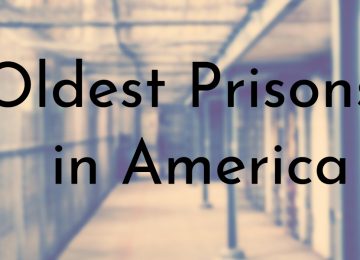London’s acclaimed past is mirrored in its magnificent hotels, each steeped in history and grandeur. This article explores ten of the oldest hotels in London, detailing their origins, the evolution of their luxury, and sharing intriguing facts that color their storied existences.
10 Oldest Hotels in London
1. The Dorchester
City Location: Mayfair, London
Year Established: 1931
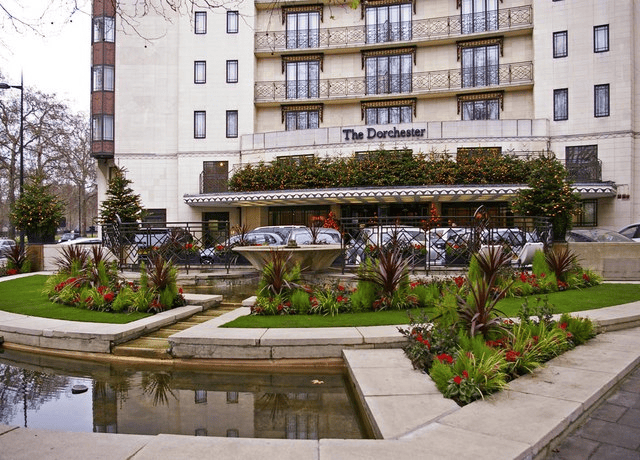 Photo Source: Wikimedia Commons
Photo Source: Wikimedia Commons
The Dorchester stands as a symbol of timeless British elegance and luxury. Opened in the early 1930s, the hotel has been associated with the glitterati of society, hosting celebrities, royals, and artists throughout the decades.
Known for its distinctive art deco style, The Dorchester offers rooms and suites that combine 1930s glamour with contemporary comfort.
The hotel’s famous Promenade is a hotspot for afternoon tea and has been the setting for many significant social events in London’s high society. The Dorchester also prides itself on its culinary offerings, with several of its restaurants and bars considered among the best in the city.
Did You Know?
The Dorchester played a unique role during World War II, serving as an officers’ club for the United States Navy. The hotel’s strategic location and luxurious amenities made it an ideal choice for high-ranking officials and strategists.
A plaque discreetly placed outside the Dorchester’s ballroom commemorates its role during the war, marking its historical significance beyond that of a luxury hotel.
2. The Waldorf Hilton, London
City Location: Aldwych, London
Year Established: 1908
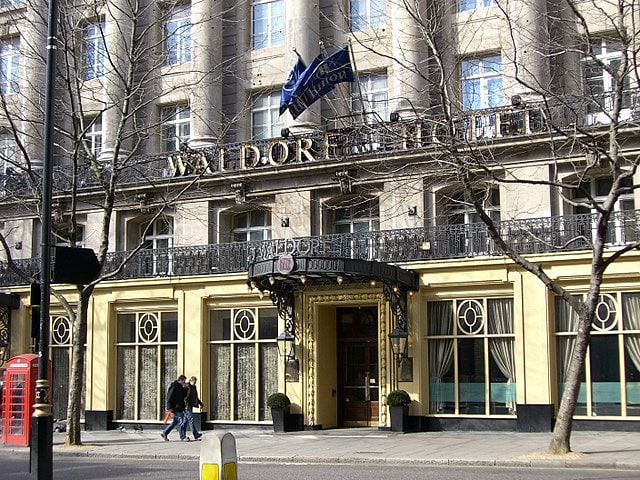
The Waldorf Hilton enjoys a prestigious location near London’s West End theatre district, making it a favorite among those visiting for both leisure and culture. The hotel combines Edwardian architectural elements with modern luxury, creating an atmosphere of sophistication.
The Waldorf Hilton is known for its beautiful Palm Court, where guests can enjoy a traditional afternoon tea amid historical settings. The hotel’s commitment to preserving its historical heritage while offering contemporary amenities makes it a standout in the London hotel scene.
Did You Know?
The Palm Court at the Waldorf Hilton is one of the original places where the English tradition of afternoon tea was established. This tradition began over a century ago and continues to be a highlight for visitors, offering a taste of Edwardian social life.
The ongoing tradition of afternoon tea at the Waldorf Hilton connects it to a broader cultural history of London, blending the past with the present in a unique dining experience.
3. The Ritz London
City Location: Piccadilly, London
Year Established: 1906
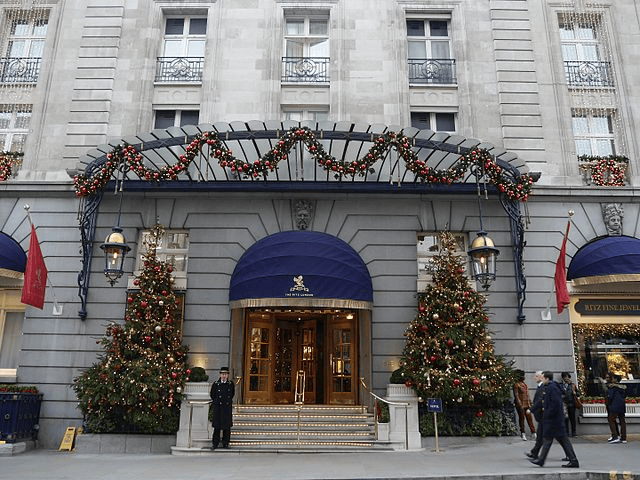
Opened by the renowned hotelier Cesar Ritz, The Ritz London has been synonymous with luxury and prestige since its inception. With its prime location in Piccadilly, the hotel has become a landmark of high society, attracting a clientele that includes royalty, politicians, and celebrities.
The architecture and interiors are a testament to the Louis XVI style, featuring lavish decor, intricate frescoes, and ornamental chandeliers, all contributing to an atmosphere of opulent old-world charm.
The Ritz is also well-known for its afternoon tea in the Palm Court, which has become a quintessential London experience.
Did You Know?
The Ritz was the first hotel in Britain to be awarded a royal warrant by Prince Charles in 2002, a recognition usually reserved for suppliers to the Royal Households who have provided goods or services for at least five years.
This honor highlights the hotel’s exceptional service and the high standards maintained since its opening. Additionally, the hotel has made numerous appearances in literature and film, symbolizing luxury and wealth, and remains a cultural icon in the UK.
4. Hotel Russell
City Location: Bloomsbury, London
Year Established: 1898
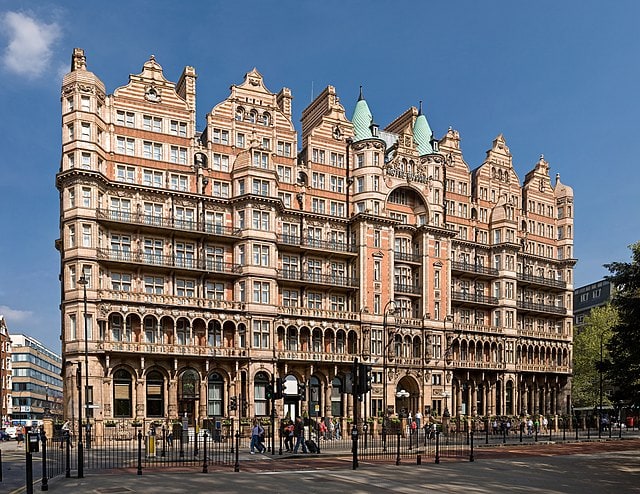
Hotel Russell, also known as The Principal London, is a stunning example of Victorian-era architecture with its ornate terracotta facade. This hotel has long been a cornerstone of the Bloomsbury neighborhood, ideally located near major academic and cultural institutions.
Inside, the hotel’s restoration has aimed to preserve its historical features while providing modern luxury, including a majestic ballroom and refurbished guest rooms that reflect the area’s heritage.
Its strategic location makes it a favorite for academics, tourists, and literary enthusiasts exploring the historical and cultural sights of London.
Did You Know?
The hotel’s grand dining room, now known as Fitz’s Bar, is often used as a set for movies and TV series, especially those set in the late 19th to early 20th century. Its authentic Victorian decor provides the perfect backdrop for period films, adding to the hotel’s charm and appeal as a location deeply embedded in London’s historical narrative.
5. The Savoy
City Location: Strand, London
Year Established: 1889
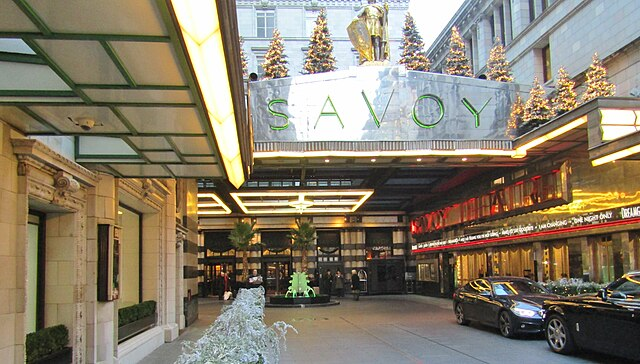
The Savoy, one of London’s most prestigious addresses, was the brainchild of Richard D’Oyly Carte, an impresario who sought to capitalize on the success of his nearby opera house.
Built to attract the elite of the time, it was the first hotel in London to provide electricity throughout and featured luxuries like private bathrooms and constant hot and cold running water in every room.
Its American Bar and Savoy Grill have hosted famous figures from around the world, helping cement The Savoy’s international reputation. The hotel’s Edwardian and Art Deco styles blend seamlessly, offering a breathtaking glimpse into the opulent early 20th century.
Did You Know?
The Savoy has a unique tradition stemming from its superstition about the number 13. Whenever a party of thirteen books a table, the hotel discreetly adds a 14th guest: a 3-foot-high sculpture of a black cat named Kaspar.
Kaspar is decked out with a napkin around his neck and given a full-place setting to ward off bad luck. This charming custom began in 1926 and has been a quirky part of the dining experience ever since.
6. The Cadogan, A Belmond Hotel
City Location: Chelsea, London
Year Established: 1887
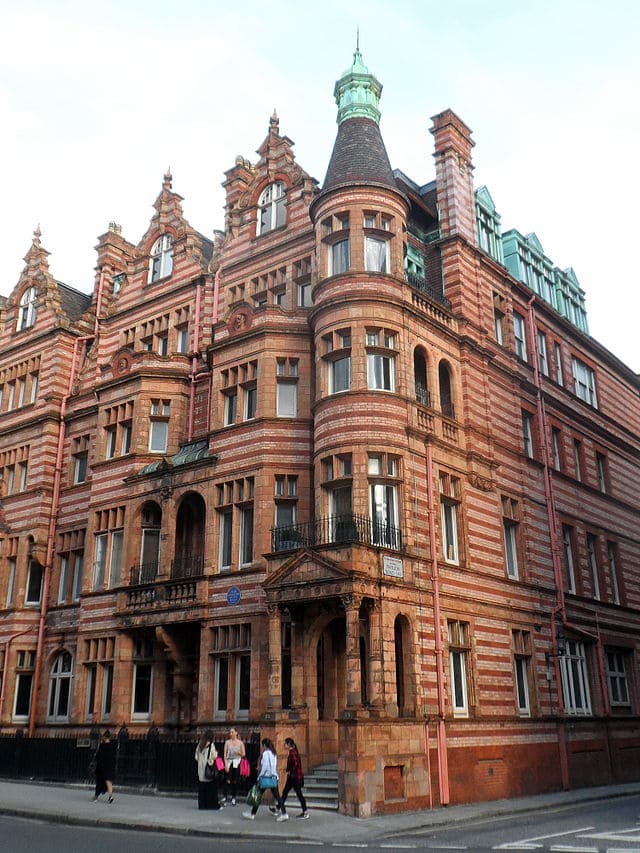
Nestled in the fashionable district of Chelsea, the Cadogan Hotel is best known as the location of Oscar Wilde’s infamous arrest in 1895.
Beyond its notorious history, the hotel epitomizes the charm and elegance of the late Victorian period. After a recent renovation, the Cadogan has blended its rich history with modern luxury, offering guests a sophisticated retreat.
The hotel maintains a strong literary and artistic heritage, making it a cultural landmark as well as a luxury accommodation.
Did You Know?
The room where Oscar Wilde was arrested, Room 118, has been preserved as a sort of literary shrine. Guests can stay in this room, where excerpts from Wilde’s works are displayed, and the decor reflects the period’s style.
This homage to Wilde honors his legacy and turns a stay at the Cadogan into a unique historical experience.
7. The Langham
City Location: Marylebone, London
Year Established: 1865

When it opened, The Langham was hailed as Europe’s first “Grand Hotel,” with its lavish design and groundbreaking amenities that set a new standard in luxury.
The hotel boasted the first hydraulic lifts in England, known as “rising rooms,” and has continued to innovate throughout its history.
The Langham has been frequented by numerous literary greats, including Mark Twain and Oscar Wilde. It is celebrated for its elegant Victorian architecture and continues to be a favorite among the elite for its exceptional service, exquisite dining options, and renowned afternoon tea.
Did You Know?
The Langham is reputed to house several ghosts, with the most famous being the figure of a man in Victorian evening wear seen in Room 333. According to legend, this room is the most haunted part of the hotel, especially during October.
Guests and staff have reported various sightings and eerie occurrences, adding a mystique to the hotel that complements its rich historical tapestry.
8. The Grosvenor Hotel
City Location: Victoria, London
Year Established: 1862
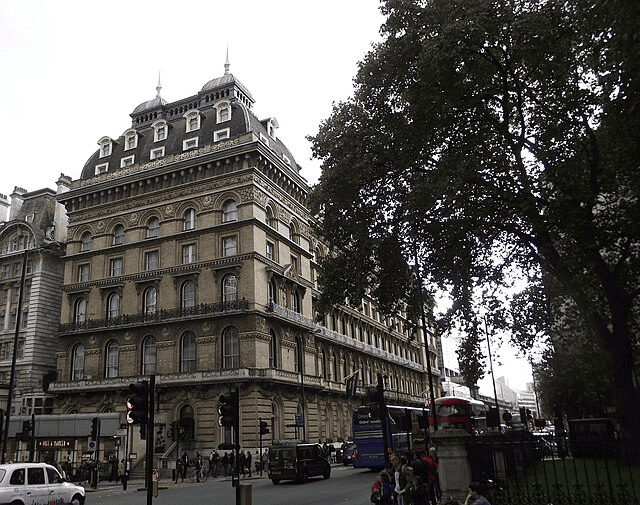
The Grosvenor Hotel, adjacent to Victoria Station, has been a landmark in London since the mid-19th century. The hotel was originally built by the Victorian railway companies, which influenced its architectural style and grandiose design.
The Grosvenor combines traditional and contemporary elements, offering guests a luxurious stay with easy access to transportation.
Its rich history is evident in the preserved Victorian features and elegant public spaces, which make it a popular choice among travelers seeking convenience and luxury.
Did You Know?
The Grosvenor retains several features from its original railway hotel days, including the grand staircase and the preserved station lounge.
These features are not just historical artifacts but are actively used in the hotel’s operations, offering guests a literal and figurative gateway to the past.
Integrating these elements into the modern hotel experience helps maintain the Grosvenor’s unique character and connection to its origins.
9. Claridge’s
City Location: Mayfair, London
Year Established: 1856
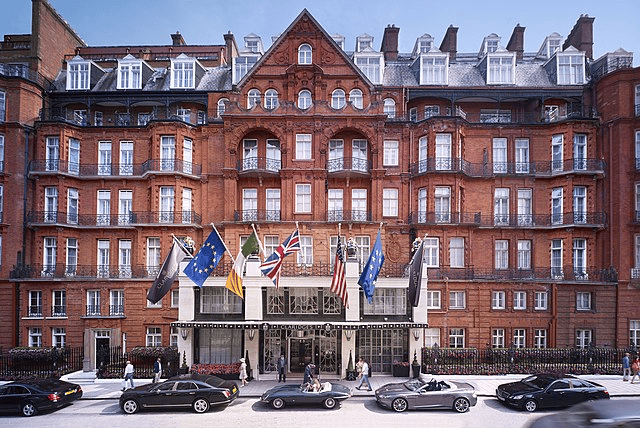
Claridge’s epitomizes the zenith of London’s luxury hotel scene. Established by William and Marianne Claridge, it merged with an adjoining hotel in 1854 and was refurbished to become the haunt of royalty and celebrities.
The hotel’s distinct Art Deco makeover in the 1920s further elevated its status. Claridge’s has maintained a longstanding relationship with the British Royal Family; it served as a refuge for kings in exile during the World Wars.
The hotel’s design is a mix of grandeur and elegance, and it regularly updates its interiors to reflect contemporary luxury while respecting its architectural heritage.
Did You Know?
During World War II, Suite 212 at Claridge’s was declared Yugoslavian territory for a single day on July 17, 1945, so that Crown Prince Alexander II could be born on his own country’s soil, ensuring his claim to the throne. This extraordinary diplomatic gesture is a testament to Claridge’s significant role on the world stage during critical historical moments.
10. Brown’s Hotel
City Location: Mayfair, London
Year Established: 1837
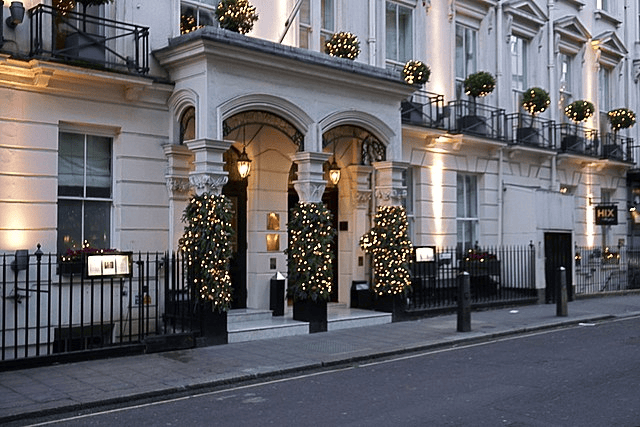
Founded by James Brown, a former valet to Lord Byron, and his wife Sarah, Brown’s Hotel is London’s first-ever hotel and has been an epitome of British refinement.
Known for its discreet service and Edwardian-period architecture, the hotel blends traditional charm with contemporary comfort.
The hotel has hosted many famous guests, including presidents and prime ministers. Brown also has a literary heritage; it was here that Rudyard Kipling completed ‘The Jungle Book’.
Its rooms and suites honor the English aesthetic, with antique furnishings complemented by modern amenities, creating an inviting blend of old and new.
Did You Know?
Queen Victoria herself was known to enjoy taking afternoon tea at Brown’s, and the hotel continues to uphold this royal tradition with great reverence.
The English Tea Room at Brown’s offers a variety of tea experiences, maintaining the customs that would have been familiar to Queen Victoria herself.
This tradition underscores Brown’s Hotel’s commitment to preserving the rich cultural heritage of its past while serving the high standards expected by today’s clientele.
Conclusion
These ten historic hotels provide luxurious accommodations and embody London’s history. Each establishment offers a unique glimpse into the past, from Victorian elegance to Art Deco glamour, intertwined with stories of famous personalities and pivotal events.
For travelers seeking more than just a place to stay, these hotels offer an immersive experience of the culture and heritage of one of the world’s most famous cities.
Whether it’s sipping tea where queens once sat or sleeping in rooms that hosted literary legends, a stay at any of these hotels is a step back in time, wrapped in the comfort of modern luxury.


